13+ Museum Strategic Plan Examples
Starting your own museum business doesn’t guarantee you success nor profitability. The success of your museum will depend mostly on your exhibits. But you can always utilize what you have and create a better analysis through the creation of a strategic plan.
To create your own museum strategic plan, here are some examples in PDF you will find very useful.
Museum Strategic Plan
Art Museum Strategic Plan
Museum Strategic Plan
Essential Components of a Strategic Plan
Here are the essential components of a general strategic plan that you should include when you will be making your own strategic plan.
1. Vision
Every strategic plan almost always begins with a vision statement. The vision statement is basically the end-goal of the strategic plan and is the main goal that the strategic plan wants to achieve. Since the vision statement is a long-term goal, it cannot be changed as often as you want. A strategic plan’s vision statement will take effect until the goal of the strategic plan has been achieved.
2. Mission
A mission statement meanwhile is the counterpart of the vision statement. While the vision statement is focused on the future, the mission statement focuses on the present and lists down how the vision will be achieved. The mission statement is basically a short outline on how the vision will be accomplished.
3. Strategic tools
The analysis will mostly come from the strategic tools you will use. There are numerous strategic tools you can use at your disposal: namely SWOT analysis, PESTLE analysis, Porter’s five forces, balanced scorecard, and growth-share matrix. You can use all strategic tools if you want, but you have to understand the purpose of each one before you proceed.
SWOT and PESTLE analysis focus on the internal and external factors that affect the business, Porter’s five analyzes the business’ competitors, while balanced scorecard and growth-share matrix analyzes the business organization’s profitability.
4. Action plan
The action plan is basically the result of the strategic tools that were used. The analysis that was created from the results of the strategic tools will be the basis of what action plan you create. The action plan should be very specific, and should outline what the company should do when faced with various internal and external issues.
College Museum Strategic Plan
Printable Museum Strategic Plan
Museum Three Year Strategic Plan
Standard Museum Strategic Plan
Sample Museum Strategic Plan
Here is a sample museum strategic plan that follows the format listed above. Take note that this is only a sample and not a detailed and well-researched museum strategic plan. This is only serves as a guide which follows the standard format and the examples we provided. You may also see strategic planning checklist examples.
Los Angeles Museum of Basketball Strategic Plan
1. Vision
Los Angeles (LA) Museum of Basketball has only one goal: to become the leading sports museum in the world.
2. Mission
To achieve its vision, the LA Museum of Basketball plans to
- continually update the memorabilia being displayed in the museum,
- develop technological advancements in presentation to create a better visual experience for visitors, and
- maintain the cleanliness and classic hard court design of the museum. You may also see strategic planning checklist examples.
3. Strategic Tools
The strategic tools that will be used for this museum strategic plan is SWOT analysis and PESTLE analysis. General SWOT analysis studies both the internal and external environment while PESTLE analysis studies the external environment only.
Irish Museums Association Strategic Plan
House Museum Strategic Plan
Free Museum Strategic Plan
County Museum Strategic Plan
Non Profit Museum Strategic Plan
SWOT Analysis
Strengths
- LA Museum of Basketball employs the most qualified personnel, with each personnel having a college degree and at least one year of relevant work experience. You may also see recruitment strategic plan examples.
- The museum is the only structure in the city that exhibits sports memorabilia of all famous Los Angeles sports teams (Lakers, Dodgers, Galaxy, Clippers, Kings).
- The museum displays exclusive memorabilia that cannot be found in other museums in the country or probably other museums in the world (i.e., 1985 NBA Finals Magic Johnson signed jersey, 1988 World Series Orel Hershiser signed jersey, etc.). You may also like personal strategic plan examples.
Weaknesses
- The museum only employs five full-time employees, in which all employees exceed the required work hours of nine hours per day (including one hour of lunch break). You may also check out one-page strategic plan examples.
- The museum is experiencing CCTV issues which will result to huge losses if theft arises.
- The museum also does not have a security personnel to roam the premises on Sundays.
- The museum failed to collect any new memorabilia in the past six months.
Opportunities
- A number of investors are looking at the museum for investment opportunities, in exchange for 20–30% share of the museum business. You may also see security strategic plan examples.
- The Los Angeles Lakers is interested to have an exclusive agreement with the museum wherein the museum will be the only organization or business entity to display classic and current Lakers memorabilia and gear.
- The museum is awaiting the result of a simple agreement to partner with public schools and universities for the museum to become a field trip venue for students of all ages.
- Discuss with remaining Los Angeles sports teams (Dodgers, Clippers, Kings, Galaxy) for exclusive display partnerships on exhibits. The museum is looking at rare memorabilia such as the sneakers worn by Kobe Bryant during his 81-point game against the Toronto Raptors in 2006, and a rare 1999 Los Angeles Clippers team photo that has not been released to the public. You may also like implementation plan examples.
Threats
- The museum might not be able to gain exclusive partnership with the other Los Angeles sports teams since most of their memorabilia are displayed throughout the city. You may also check out procurement strategy plan examples.
- Rising electricity costs will be a problem for the museum long-term.
- Inflation rate has gone up to 5% this year, and it will pose a problem as employee salaries will also need to be increased. Employee salary increased twice the previous year. You might be interested in community strategic plan examples.
PESTLE Analysis
Political
- New government officials will be elected next month. Their business policies are still unclear if they retain the previous administration’s general policies or formulate new ones.
Economic
- As previously mentioned, inflation rate has gone to up to 5% this year and it will definitely affect business operations.
Technological
- A new CCTV hardware should be installed.
- Three new OLED monitors should be purchased to showcase new video presentations.
- Employees should be able to learn basic Photoshop and Illustrator software. You may also like school strategic plan examples.
Legal
- The museum has hired a licensed lawyer to deal with legal issues that might arise.
- All memorabilia and exclusive gears are bound by agreements and contracts with the sports teams. You may also check out business development strategy plan examples.
Environment
- In observance with environmental laws, the museum will be imposing a strict policy on trash disposal. Trash must be disposed in either biodegradable or non-biodegradable bins. You might be interested in marketing strategy plan examples.
4. Action Plan
These are the specific actions that need to be carried out in the strategic plan:
- The museum will be purchasing new CCTV software as soon as possible.
- The museum will be purchasing new trash bins for proper disposal of waste.
- Employee salaries will increase by 5% starting next month to offset the increase in inflation set by the national government. You may also see health and safety strategic plan examples.
- Discuss with remaining Los Angeles sports teams (Dodgers, Clippers, Kings, Galaxy) for exclusive partnerships on exhibits.
- Finalize deal with investor to expand museum operations.
County Museum and Historic Gaol Strategic Plan
Museum Strategic Plan Manual
Popular Museums to Visit Around the World
Before you establish your own museum, you obviously need to familiarize yourself on how a museum works and the process that involves in setting up exhibits. You can always visit your local museum, but it would be more fulfilling if you visit one of the famous museums listed below. You may also see social media strategy plan examples.
Here is a list of the most popular museums in the world:
1. Louvre (Paris, France)
The Louvre tops this list as the most popular museum in the world, as it was the most visited museum in 2017 according to the annual Theme Index and Museum Index. The Louvre’s iconic pyramid design is a favorite among local and foreign tourists, although it is not the only highlight of the museum as the Louvre is also the world’s largest art museum. You may also like strategic action plan examples.
2. National Museum of China (Beijing, China)
The National Museum of China is conveniently located at the famous Tiananmen Square. It is the country’s largest museum and was listed as the second most visited museum in the world in 2017, only after the Louvre.
3. National Air and Space Museum (Washington, USA)
The National Air and Space Museum found inside the Smithsonian Institution in Washington, DC, has the largest collection of aviation, spaceflight, planetary science, terrestrial geology, and geophysics exhibits in the world. You may also check out communication strategy plan examples.
4. Vatican Museums (Vatican, Italy)
The Vatican Museums, founded by Pope Julius II in the 16th century, are the oldest museums in the world. Located at the city boundaries of the Vatican, the Vatican museums contain the largest Roman Catholic and Christian exhibits in the world. You might be interested in HR strategy plan examples.
5. British Museum (London, England)
The United Kingdom’s largest museum also makes this list. Massive collection from the British Empire can be found in this museum, as well as published works from famous British scientists such as Charles Darwin, Stephen Hawking, Isaac Newton, and Sir Hans Sloane. You may also see tourism strategic plan examples.
13+ Museum Strategic Plan Examples
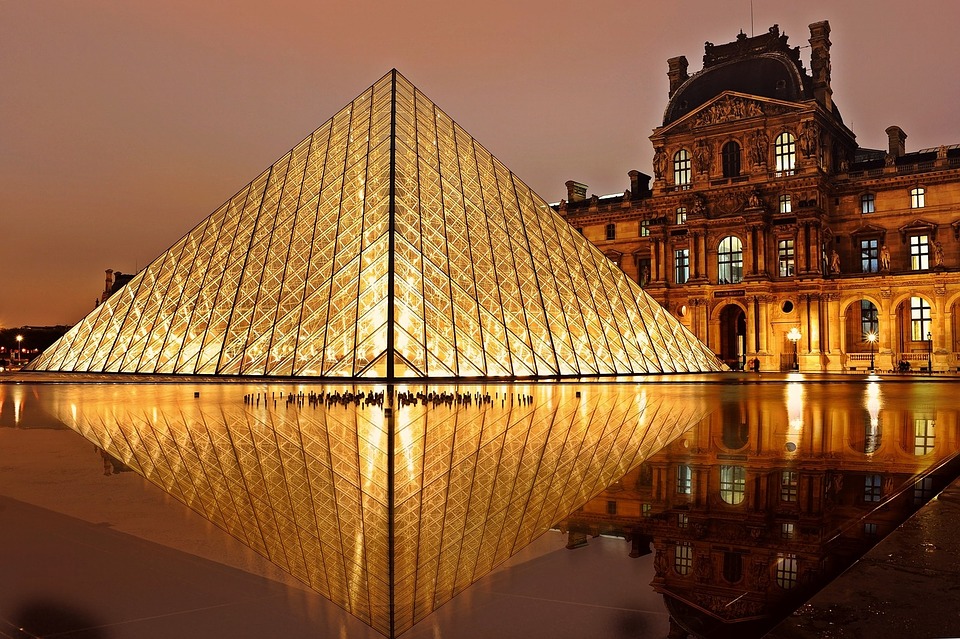
Starting your own museum business doesn’t guarantee you success nor profitability. The success of your museum will depend mostly on your exhibits. But you can always utilize what you have and create a better analysis through the creation of a strategic plan.
To create your own museum strategic plan, here are some examples in PDF you will find very useful.
Museum Strategic Plan
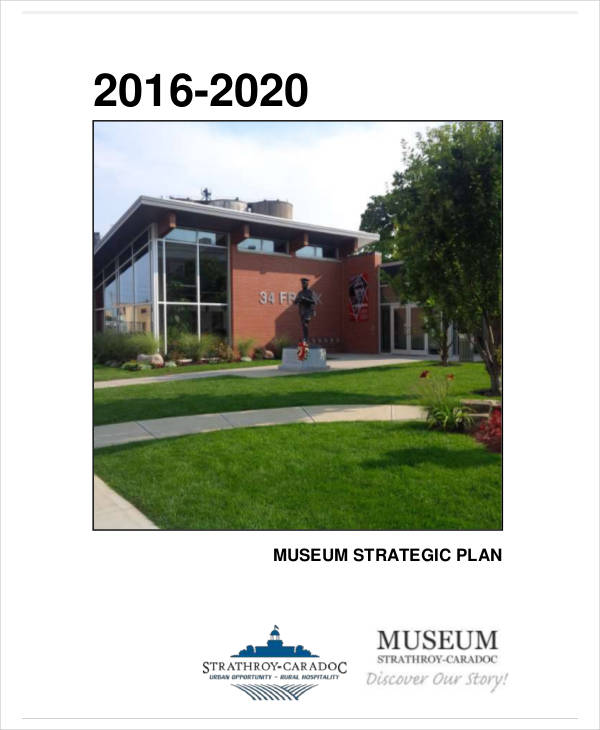
strathroy-caradoc.ca
Details
File Format
PDF
Size: 432 KB
Art Museum Strategic Plan
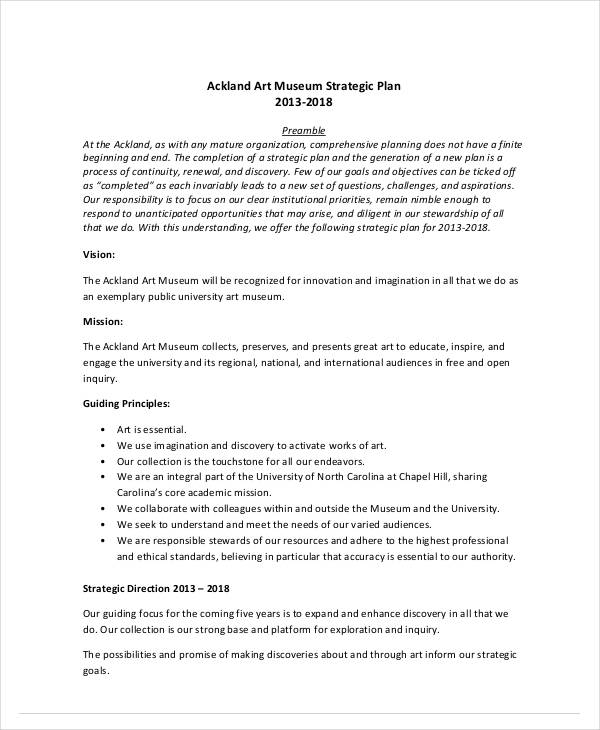
ackland.org
Details
File Format
PDF
Size: 410 KB
Museum Strategic Plan
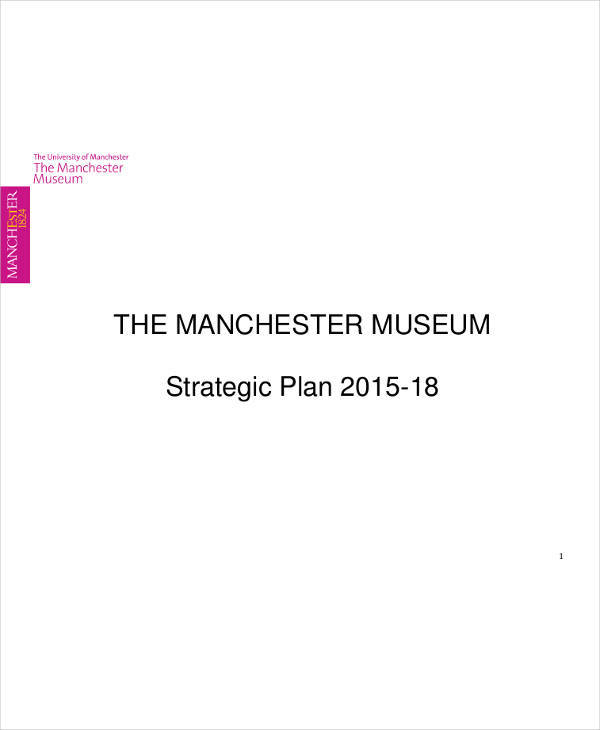
documents.manchester.ac.uk
Details
File Format
PDF
Size: 557 KB
Essential Components of a Strategic Plan
Here are the essential components of a general strategic plan that you should include when you will be making your own strategic plan.
1. Vision
Every strategic plan almost always begins with a vision statement. The vision statement is basically the end-goal of the strategic plan and is the main goal that the strategic plan wants to achieve. Since the vision statement is a long-term goal, it cannot be changed as often as you want. A strategic plan’s vision statement will take effect until the goal of the strategic plan has been achieved.
2. Mission
A mission statement meanwhile is the counterpart of the vision statement. While the vision statement is focused on the future, the mission statement focuses on the present and lists down how the vision will be achieved. The mission statement is basically a short outline on how the vision will be accomplished.
3. Strategic tools
The analysis will mostly come from the strategic tools you will use. There are numerous strategic tools you can use at your disposal: namely SWOT analysis, PESTLE analysis, Porter’s five forces, balanced scorecard, and growth-share matrix. You can use all strategic tools if you want, but you have to understand the purpose of each one before you proceed.
SWOT and PESTLE analysis focus on the internal and external factors that affect the business, Porter’s five analyzes the business’ competitors, while balanced scorecard and growth-share matrix analyzes the business organization’s profitability.
4. Action plan
The action plan is basically the result of the strategic tools that were used. The analysis that was created from the results of the strategic tools will be the basis of what action plan you create. The action plan should be very specific, and should outline what the company should do when faced with various internal and external issues.
College Museum Strategic Plan
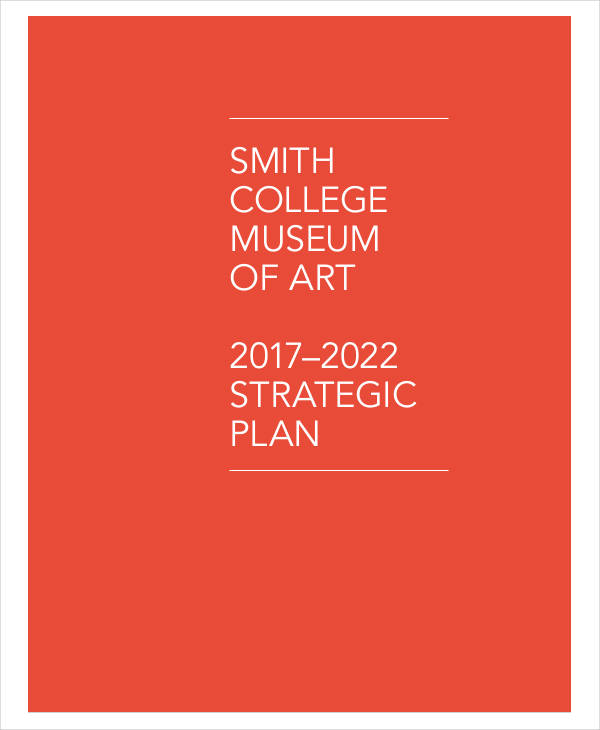
hcommons.org
Details
File Format
PDF
Size: 4 MB
Printable Museum Strategic Plan
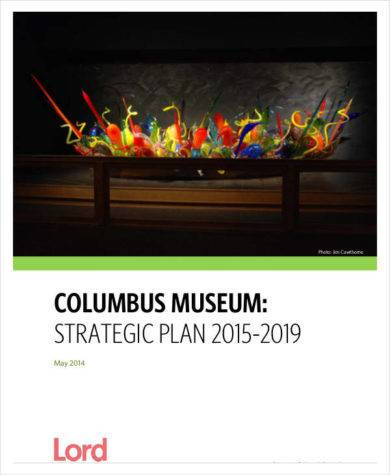
columbusmuseum.com
Details
File Format
PDF
Size: 283 KB
Museum Three Year Strategic Plan
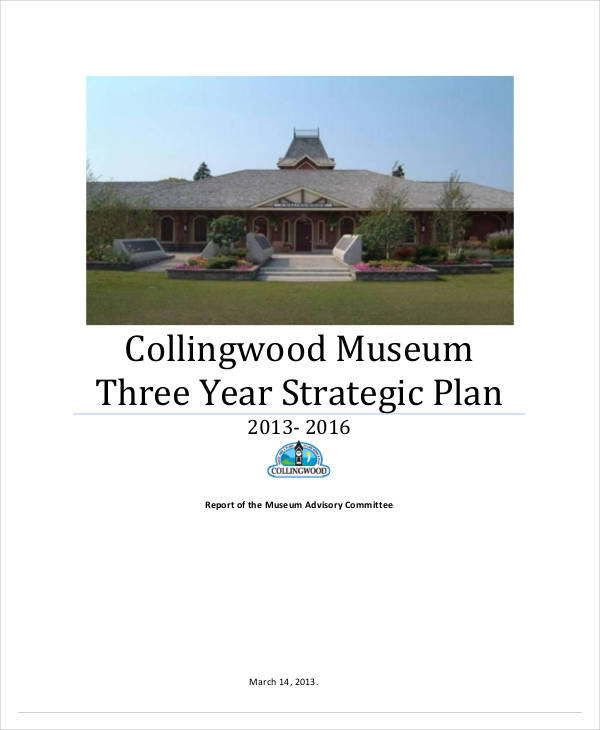
collingwood.ca
Details
File Format
PDF
Size: 878 KB
Standard Museum Strategic Plan

sgfmuseum.org
Details
File Format
PDF
Size: 386 KB
Sample Museum Strategic Plan
Here is a sample museum strategic plan that follows the format listed above. Take note that this is only a sample and not a detailed and well-researched museum strategic plan. This is only serves as a guide which follows the standard format and the examples we provided. You may also see strategic planning checklist examples.
Los Angeles Museum of Basketball Strategic Plan
1. Vision
Los Angeles (LA) Museum of Basketball has only one goal: to become the leading sports museum in the world.
2. Mission
To achieve its vision, the LA Museum of Basketball plans to
continually update the memorabilia being displayed in the museum,
develop technological advancements in presentation to create a better visual experience for visitors, and
maintain the cleanliness and classic hard court design of the museum. You may also see strategic planning checklist examples.
3. Strategic Tools
The strategic tools that will be used for this museum strategic plan is SWOT analysis and PESTLE analysis. General SWOT analysis studies both the internal and external environment while PESTLE analysis studies the external environment only.
Irish Museums Association Strategic Plan
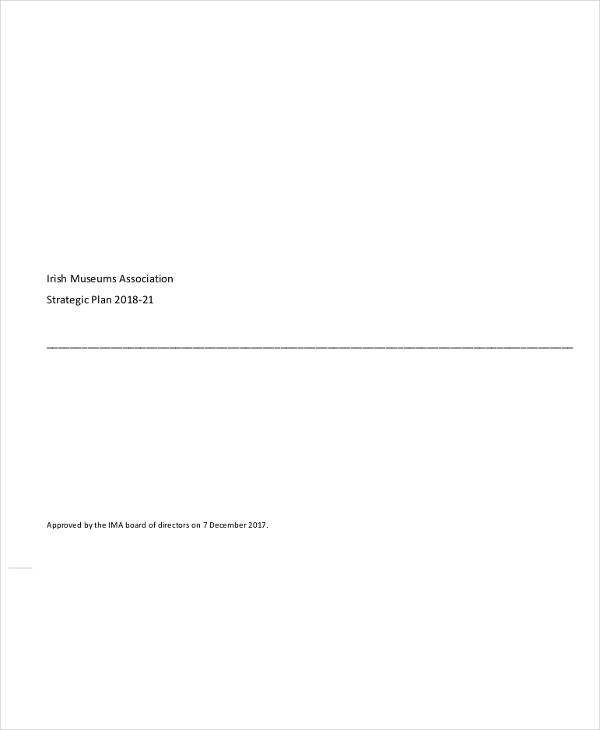
irishmuseums.org
Details
File Format
PDF
Size: 527 KB
House Museum Strategic Plan
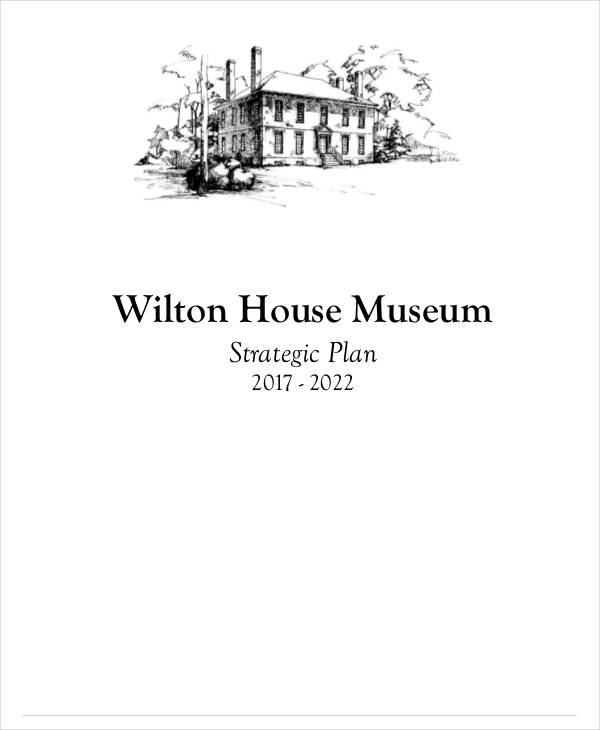
wiltonhousemuseum.org
Details
File Format
PDF
Size: 502 KB
Free Museum Strategic Plan
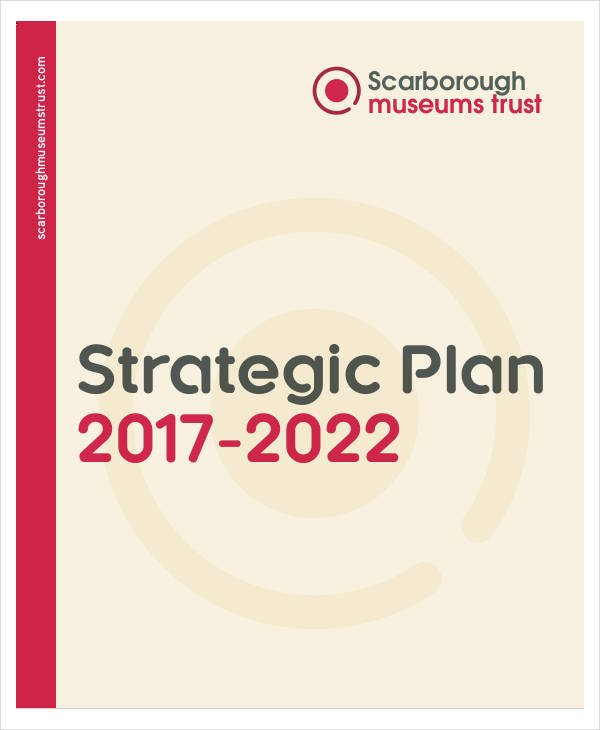
scarboroughmuseumstrust.com
Details
File Format
PDF
Size: 5 MB
County Museum Strategic Plan
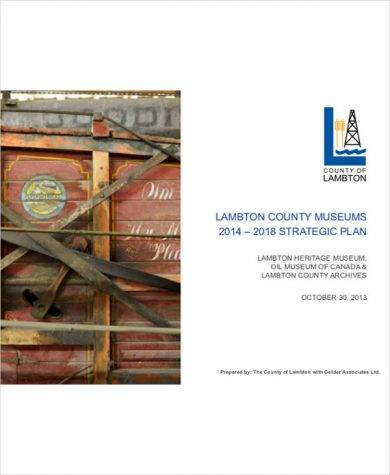
lambtonmuseums.ca
Details
File Format
PDF
Size: 1 MB
Non Profit Museum Strategic Plan
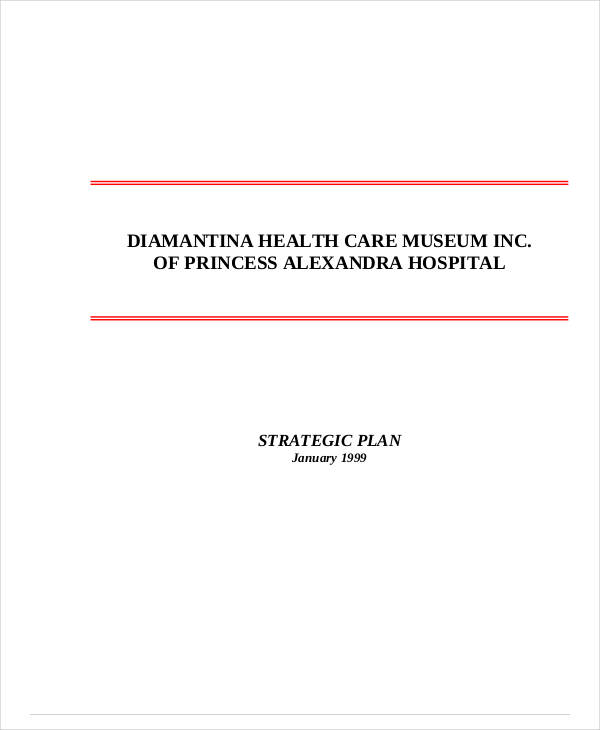
metrosouth.health.qld.gov.au
Details
File Format
PDF
Size: 54 KB
SWOT Analysis
Strengths
LA Museum of Basketball employs the most qualified personnel, with each personnel having a college degree and at least one year of relevant work experience. You may also see recruitment strategic plan examples.
The museum is the only structure in the city that exhibits sports memorabilia of all famous Los Angeles sports teams (Lakers, Dodgers, Galaxy, Clippers, Kings).
The museum displays exclusive memorabilia that cannot be found in other museums in the country or probably other museums in the world (i.e., 1985 NBA Finals Magic Johnson signed jersey, 1988 World Series Orel Hershiser signed jersey, etc.). You may also like personal strategic plan examples.
Weaknesses
The museum only employs five full-time employees, in which all employees exceed the required work hours of nine hours per day (including one hour of lunch break). You may also check out one-page strategic plan examples.
The museum is experiencing CCTV issues which will result to huge losses if theft arises.
The museum also does not have a security personnel to roam the premises on Sundays.
The museum failed to collect any new memorabilia in the past six months.
Opportunities
A number of investors are looking at the museum for investment opportunities, in exchange for 20–30% share of the museum business. You may also see security strategic plan examples.
The Los Angeles Lakers is interested to have an exclusive agreement with the museum wherein the museum will be the only organization or business entity to display classic and current Lakers memorabilia and gear.
The museum is awaiting the result of a simple agreement to partner with public schools and universities for the museum to become a field trip venue for students of all ages.
Discuss with remaining Los Angeles sports teams (Dodgers, Clippers, Kings, Galaxy) for exclusive display partnerships on exhibits. The museum is looking at rare memorabilia such as the sneakers worn by Kobe Bryant during his 81-point game against the Toronto Raptors in 2006, and a rare 1999 Los Angeles Clippers team photo that has not been released to the public. You may also like implementation plan examples.
Threats
The museum might not be able to gain exclusive partnership with the other Los Angeles sports teams since most of their memorabilia are displayed throughout the city. You may also check out procurement strategy plan examples.
Rising electricity costs will be a problem for the museum long-term.
Inflation rate has gone up to 5% this year, and it will pose a problem as employee salaries will also need to be increased. Employee salary increased twice the previous year. You might be interested in community strategic plan examples.
PESTLE Analysis
Political
New government officials will be elected next month. Their business policies are still unclear if they retain the previous administration’s general policies or formulate new ones.
Economic
As previously mentioned, inflation rate has gone to up to 5% this year and it will definitely affect business operations.
Technological
A new CCTV hardware should be installed.
Three new OLED monitors should be purchased to showcase new video presentations.
Employees should be able to learn basic Photoshop and Illustrator software. You may also like school strategic plan examples.
Legal
The museum has hired a licensed lawyer to deal with legal issues that might arise.
All memorabilia and exclusive gears are bound by agreements and contracts with the sports teams. You may also check out business development strategy plan examples.
Environment
In observance with environmental laws, the museum will be imposing a strict policy on trash disposal. Trash must be disposed in either biodegradable or non-biodegradable bins. You might be interested in marketing strategy plan examples.
4. Action Plan
These are the specific actions that need to be carried out in the strategic plan:
The museum will be purchasing new CCTV software as soon as possible.
The museum will be purchasing new trash bins for proper disposal of waste.
Employee salaries will increase by 5% starting next month to offset the increase in inflation set by the national government. You may also see health and safety strategic plan examples.
Discuss with remaining Los Angeles sports teams (Dodgers, Clippers, Kings, Galaxy) for exclusive partnerships on exhibits.
Finalize deal with investor to expand museum operations.
County Museum and Historic Gaol Strategic Plan

huroncountymuseum.ca
Details
File Format
PDF
Size: 1 MB
Museum Strategic Plan Manual
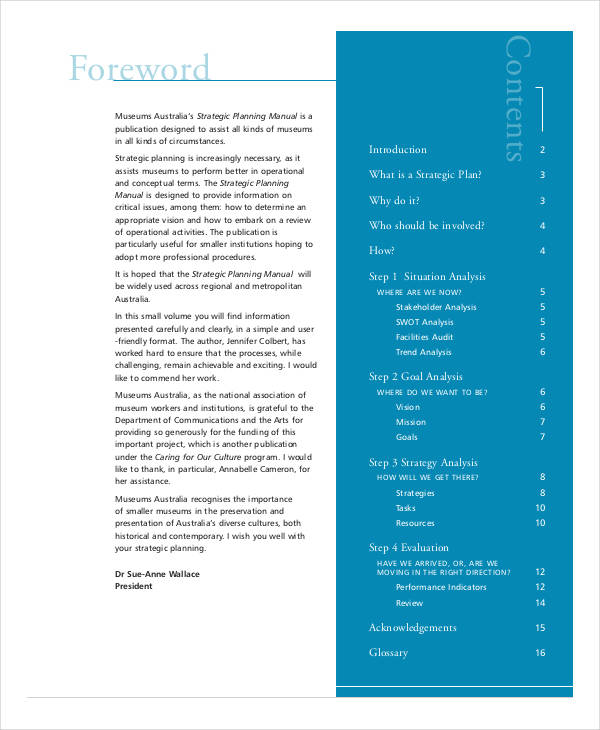
mgnsw.org.au
Details
File Format
PDF
Size: 283 KB
Popular Museums to Visit Around the World
Before you establish your own museum, you obviously need to familiarize yourself on how a museum works and the process that involves in setting up exhibits. You can always visit your local museum, but it would be more fulfilling if you visit one of the famous museums listed below. You may also see social media strategy plan examples.
Here is a list of the most popular museums in the world:
1. Louvre (Paris, France)
The Louvre tops this list as the most popular museum in the world, as it was the most visited museum in 2017 according to the annual Theme Index and Museum Index. The Louvre’s iconic pyramid design is a favorite among local and foreign tourists, although it is not the only highlight of the museum as the Louvre is also the world’s largest art museum. You may also like strategic action plan examples.
2. National Museum of China (Beijing, China)
The National Museum of China is conveniently located at the famous Tiananmen Square. It is the country’s largest museum and was listed as the second most visited museum in the world in 2017, only after the Louvre.
3. National Air and Space Museum (Washington, USA)
The National Air and Space Museum found inside the Smithsonian Institution in Washington, DC, has the largest collection of aviation, spaceflight, planetary science, terrestrial geology, and geophysics exhibits in the world. You may also check out communication strategy plan examples.
4. Vatican Museums (Vatican, Italy)
The Vatican Museums, founded by Pope Julius II in the 16th century, are the oldest museums in the world. Located at the city boundaries of the Vatican, the Vatican museums contain the largest Roman Catholic and Christian exhibits in the world. You might be interested in HR strategy plan examples.
5. British Museum (London, England)
The United Kingdom’s largest museum also makes this list. Massive collection from the British Empire can be found in this museum, as well as published works from famous British scientists such as Charles Darwin, Stephen Hawking, Isaac Newton, and Sir Hans Sloane. You may also see tourism strategic plan examples.

